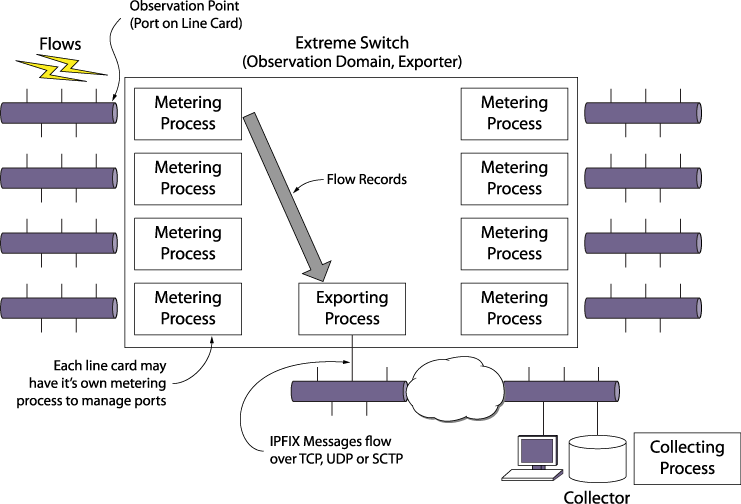The IP Flow Information Export (IPFIX) protocol (created by the IETF) is a standard way to capture information about traffic flows passing through network elements in a data network.
The protocol consists of a metering process, an exporting process, and a collecting process. This section discusses the metering and exporting processes; the collecting process is not defined by the standard and therefore is outside the scope of this document. The IPFIX protocol is a rival, but complementary, protocol to sFlow.
The Extreme Networks switch contains various metering processes that gather information about flows through different ports, or observation points, on the switch. This information includes: the ingress and egress interfaces, the link state, IPFIX state, flow count, byte count, packet count, flow record count and premature exports. The metering process then sends the information to the exporting process in the switch which handles communication, using TCP, UDP, or SCTP transport protocols, over the network to a collecting process.


 Print
this page
Print
this page Email this topic
Email this topic Feedback
Feedback